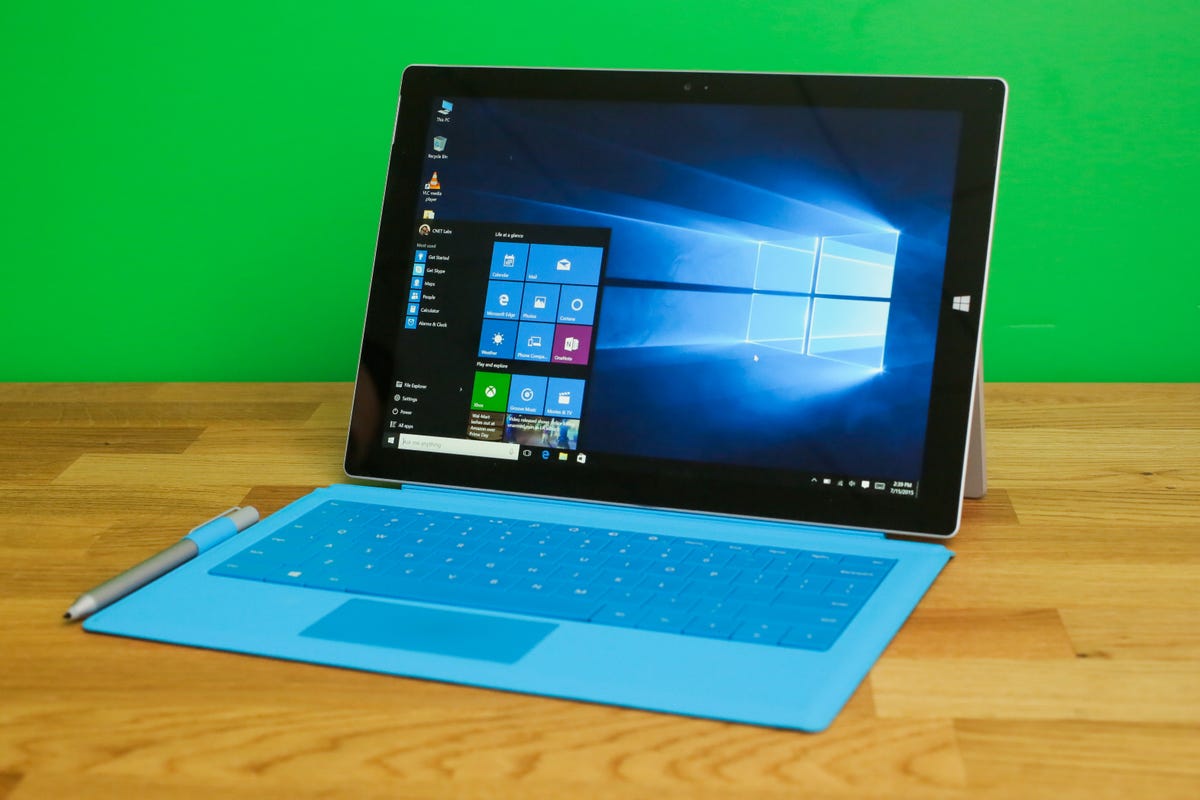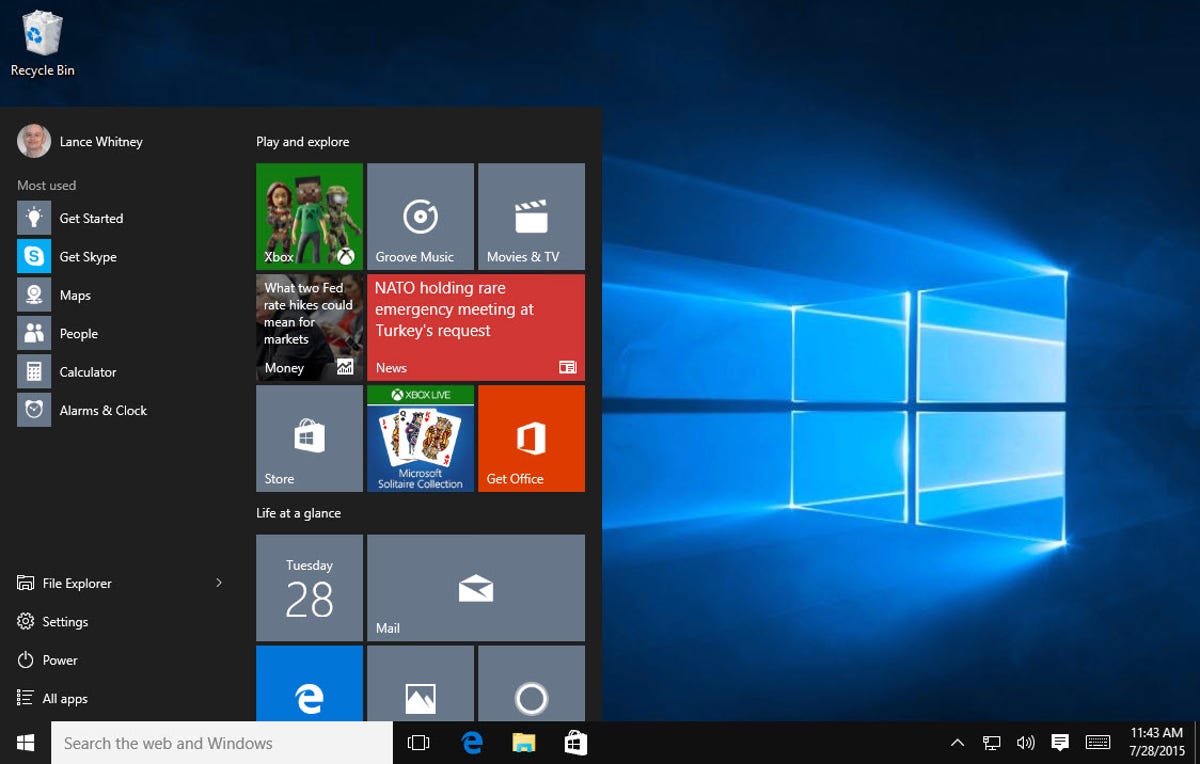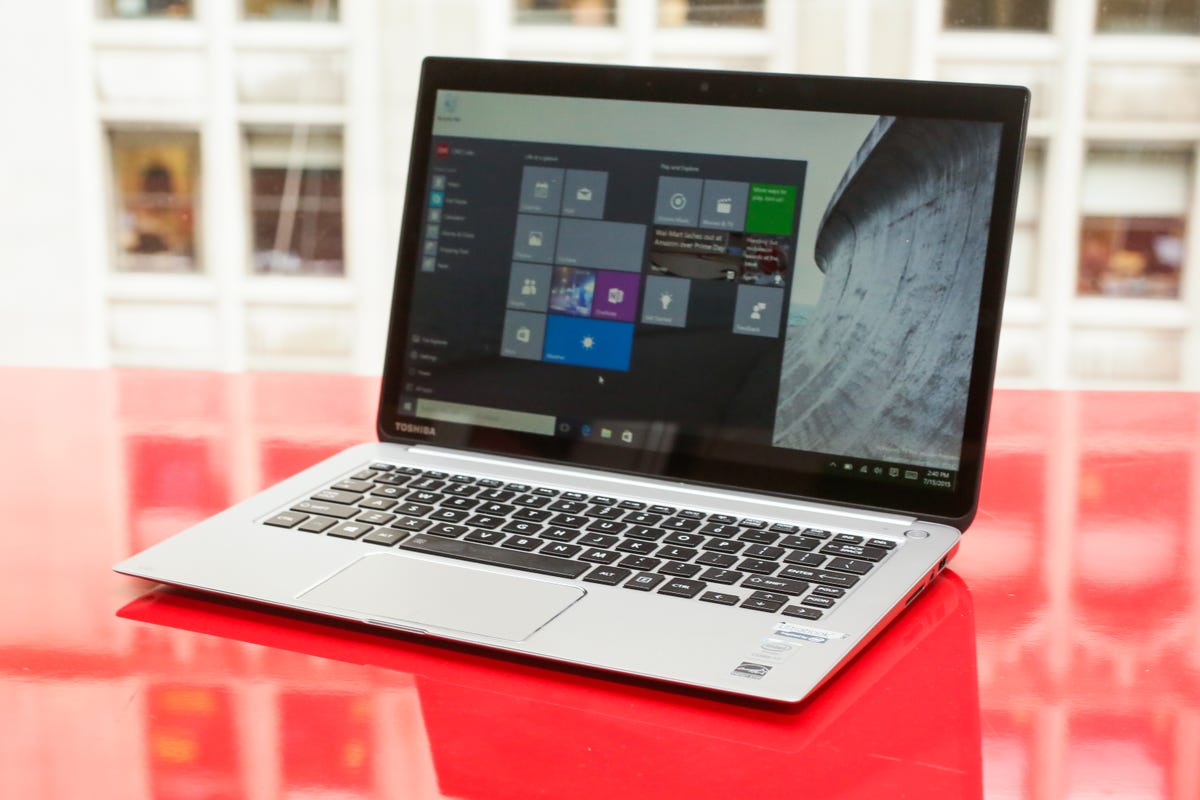
Sarah Tew/CNET
Windows 10 represents a major change in how PCs look and work. Most early reviews and impressions of the new operating system have been positive, emphasizing the integrated desktop and start menu, the new Edge browser, and the Cortana digital assistant.
But historically, upgrading a PC to a new OS has been known to cause performance and compatibility issues, judging from the rough transition between previous versions of Windows, such as XP to Vista or Windows 7 to Windows 8 .
This time around, Microsoft is trying to make it as easy as possible to move from Windows 8 (or Windows 7) to Windows 10
. The upgrade is free for nearly all computer owners; judging from both the preview versions and final build we’ve tested, the upgrade process is easy and doesn’t destroy existing data or applications; and the upgraded laptops, desktops, and hybrids we’ve tried Windows 10 on all seem to work just as well as they did before.
Beyond the actual installation of Windows 10 and the flashy new interfaces and features, how does the new operating system affect system performance? The CNET Labs team took a half-dozen Windows 8 computers, covering a wide range of prices, components, and styles, and upgraded them to the most current version of Windows 10, build 10240, which is the same code consumers can expect to download starting July 29.


Screenshot by Lance Whitney/CNET
We then ran some of our benchmark tests on these systems, comparing the scores with how the same exact hardware performed running Windows 8. The Multimedia Multitasking test used here encodes a video while playing back separate HD and 4K files in the background, while the Photoshop image processing test resizes, applies filters and saves a collection of high-resolution images from raw files.
The set of systems we tested included high-end laptops and hybrids with current-gen Intel Core i5 and Core i7 CPUs, including Microsoft’s flagship Surface Pro 3 , as well as less-expensive systems with Intel Atom and Celeron processors, such as the $200 HP Stream 11 laptop.
Across each of these, the difference in performance between the Windows 8 and Windows 10 operating systems was minimal, which should assuage the fears of anyone concerned about upgrading for productivity reasons. In the majority of head-to-head results, the original Windows 8 test scores were faster by a few seconds, but not by enough that you’ll notice in everyday use, and in most cases, the difference was small enough to be statistically insignificant.
It’s worth noting that Microsoft has not promised an improvement in performance when transitioning to Windows 10, so these results are not unexpected. But if you were worried about the possibility of degraded performance because of the new OS, that does not seem to be anything to worry about, especially as the system requirements for Windows 10 are essentially the same as for Windows 8.
When testing the mainstream Lenovo Y70 gaming laptop, a run-through of the BioShock: Infinite benchmark at high detail settings and 1,920×1,080 resolution gave us 58.6 frames per second under Windows 10, which is comparable to what other systems with the same Nvidia GeForce 860M GPU have scored under Windows 8. That’s especially reassuring, as some earlier test builds of Windows 10 ran into major problems when trying to run games using discrete graphics cards. We’re continuing to test gaming hardware and graphics card drivers, and will report our results when we’ve tested more games and more systems.


Sarah Tew/CNET
The upshot is that computer owners upgrading to Windows 10 from Windows 8 (and presumably Windows 7) should expect to get the same level of performance out of their machines that they do now, and should also expect to make the transition smoothly, without losing access to data, files, applications or otherwise crippling their PCs.
In previous Windows OS cycles, this was not always the case, and our recommendation in the past has been to wait until you buy a new computer to get the newest version of Windows. For Windows 10, based on our testing to date, that caveat is no longer required.
Multimedia Multitasking Test 3.0
Lenovo Y70 (Touch)
261
249
Toshiba Satellite E45t
620
696
Acer Revo RL85
708
726
Microsoft Surface Pro 3
911
929
Microsoft Surface 3
1218
1220
HP Stream 11
3736
3742
Legend:
Multimedia Multitasking Test 3.0 (Windows 8.1)
Multimedia Multitasking Test 3.0 (Windows 10 ver. 10240)
Note:
Shorter bars indicate better performance (in seconds).
Adobe Photoshop CS5 Image-processing test
Lenovo Y70 (Touch)
201
204
Microsoft Surface Pro 3
236
238
Acer Revo RL85
255
258
Toshiba Satellite E45t
274
258
Microsoft Surface 3
617
619
HP Stream 11
690
692
Legend:
Adobe Photoshop CS5 image-processing test (Windows 8.1)
Adobe Photoshop CS5 image-processing test (Windows 10 ver. 10240)
Note:
Shorter bars indicate better performance (in seconds)
System Configurations
| Acer Revo RL85 | Microsoft Windows 8.1, Windows 10 ver. 10240 (64-bit); 2.2GHz Intel Core i5-5200U; 8GB DDR3 SDRAM 1,600MHz; 3839MB (shared) Intel HD Graphics 5500; 1TB 5,400rpm SSHD |
|---|---|
| Lenovo Y70 (Touch) | Microsoft Windows 8.1, Windows 10 ver. 10240 (64.bit); 2.5GHz Intel Core i7-4710HQ; 16GB DDR3 SDRAM 1,600MHz; 4096MB Nvidia GeForce GTX 860M; 1TB SSHD |
| Microsoft Surface 3 | Microsoft Windows 8.1, Windows 10 ver. 10240 (64-bit); 1.6GHz Intel Atom Z8700; 4GB DDR3 SDRAM 1,600MHz; 32MB (dedicated) Intel HD Graphics; 128GB SSD |
| Microsoft Surface Pro 3 | Microsoft Windows 8.1, Windows 10 ver. 10240 (64.bit); 1.9GHZ Intel Core i5-4300U; 8GB DDR3 SDRAM 1,600MHz; 1792MB (shared) Intel HD 4400 Graphics; 256GB SSD |
| Toshiba Satellite E45t | Microsoft Windows 8.1, Windows 10 ver. 10240 (64.bit); 1.6Ghz Intel Core i5-4200U; 6GB DDR3 SDRAM 1,600MHz; 128MB (dedicated) Intel HD Graphics 4400; 750GB 5,400 HDD |
| HP Stream 11 | Microsoft Windows 8.1, Windows 10 ver. 10240 (64.bit); 2.16GHz Intel Celeron N2840; 2GB DDR3 SDRAM 1,333MHz; 64MB (dedicated) Intel HD Graphics; 32GB SSD |




